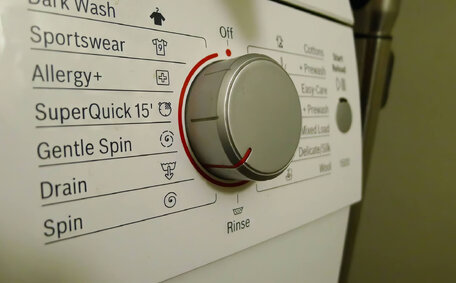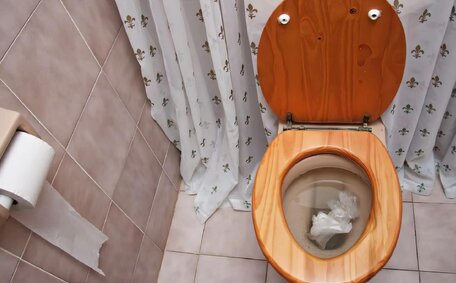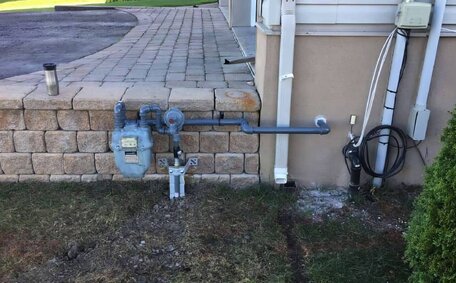How Tree Roots Invade and Damage Sewer and Drain Pipes
Tree roots aggressively seek out moisture, nutrients, and oxygen, often resulting in the infiltration of pipes and complications in your sewer system. Entry points for these roots typically include cracks and joins in your plumbing infrastructure.
Some trees have expansive root systems that extend far beyond their visible parts and can intrude into underground plumbing. Over time, The relentless quest for sustenance will drive tree roots considerable distances, causing issues within your sewer line.
When tree roots invade your drainage system, they can severely damage pipes through expansion, causing blockages or exerting outward pressure that may result in cracks, leaks, or pipe collapse.
Older clay and concrete pipes are especially vulnerable to root invasion through age-related cracking, while modern PVC pipes are not immune and can be compromised at loose or displaced joints.
Why Tree Roots are Attracted to Sewer Pipes
The oxygen-rich cavities within drainage systems are prime targets for tree roots due to their need for oxygen to sustain growth.
Tree roots, drawn to the water inside drains, significantly contribute to blockages and obstruct water flow. Additionally, they are attracted to sewage, a rich source of organic matter and minerals that serve as nutrients.
Tree roots exploit these conditions to thrive, often compromising sewer lines and underground plumbing systems.
During droughts or freezes when above-ground moisture is scarce, tree roots intensify their search for water, often penetrating sewer pipes and causing significant blockages.
Understanding the attraction of sewer lines to tree roots aids in devising defensive strategies such as root barriers and careful tree placement. Trenchless pipe relining is also an effective solution that stabilises pipes to prevent future root re-entry, without destroying surrounding garden beds in the process.
Identifying Blockages and Damage Caused by Tree Roots
Slow drainage, often pinpointed through CCTV inspections, signifies potential blockages, indicating roots may be impeding your drain’s function.
Gurgling sounds from drains are clear indicators of blockages, often resulting from tree roots penetrating your underground pipes.
Foul odours from drains and backed-up sinks or toilets are also indicators of blockages, potentially caused by tree roots. This occurs when sewage gets trapped behind root masses. Leaf debris or even thick root clusters themselves appearing when you flush toilets or in sink/floor drain traps also indicates the most common tree root invasion inside pipes.
These symptoms suggest tree root intrusion, but professional inspections using CCTV pipe cameras are essential to determine the precise location and extent of the damage caused by roots.
Regular inspections by a professional plumber can prevent severe blockages and enable early detection of root invasion, allowing for preventative measures to protect your plumbing system.
Signs of a Drain Blockage from Tree Roots
There are several clear indicators that tree roots causing blockages have led to drainage issues within your plumbing system. The most obvious sign of tree roots blocking your system is water draining very slowly from sinks, showers, baths and toilets. You may also hear loud gurgling noises, one of the most telling signs, coming from drain lines as water struggles to pass through congested pipes.
Seeing debris like leaves or small sticks in sink or toilet bowls also suggests tree roots have broken into pipes and dislodged material. Booking a camera pipe inspection with your plumber can pinpoint the precise location and severity of root intrusions in your drains.
Thick root mats themselves may even appear. However, many roots blocked issues occur out of sight underground.
Early identification of root intrusion can lead to efficient clearing of blocked pipes and proactive measures such as relining or replacement to preempt future damage. Untreated, expanding roots can cause severe damage, including pipe fractures and sewer overflows.
Mechanical Tree Root Removal Methods
For removing tree roots, various mechanical techniques are available for deployment to clearing blocked drains of the invasive growth that has breached them. Specialised drain cleaning equipment is commonly used to clear tree roots, working with rotary cutting blades or high-pressure water jets.
The cutters, one of the most common tools for this job, are mounted on flexible cables or spring coils enabling them to navigate long distances within pipes. Spinning at very high speeds, they slice through even thick tree roots within drainage pipes. They are available in various sizes to make sure they can handle anything from small residential to large commercial drains.
High pressure jet cleaners, delivering forceful water jets up to 5000 psi, can effectively dislodge tree roots from your drains. They wash the debris down your drain pipes completely cleaning the pipe as the jet nozzle moves forward.
Although home remedies like baking soda may offer some benefit, significant root intrusions typically require professional removal and pipe rehabilitation, optimally followed by pipe relining to prevent future issues.
Chemical Treatments for Tree Root Removal
Copper sulphate is a root growth inhibitor. Tablets or powders make their way down to coat pipe interiors.
When applied in drain lines, copper sulphate effectively targets the obstructive tree roots with minimal damage to the remaining tree. Another option, often used where the sewer line can approach near your property, is caustic soda (sodium hydroxide), which breaks down cell walls and tissues on contact, killing roots.
These chemicals should be used sparingly and not before heavy rainfall to prevent residue runoff into surrounding soil and water bodies.
Follow-up pipe relining then provides a protective barrier. While providing a convenient treatment, improper chemical disposal that targets the root-damaged drain pipe carries pollution risks. Many consider them a short-term solution, as new root growth often recurs.
When managed by a professional plumber, chemical treatments can effectively remove root intrusions in household drains, although they may not remedy broader pipe damage. Persistent blockages should be professionally inspected.
Preventive Measures to Stop Tree Root Intrusion
There are several considerations about tree root management that can be taken to stop tree roots from growing into underground drainage pipes:
Choose Pipe-Friendly Trees
It’s crucial to plant new trees and shrubs in locations with less aggressive root systems, avoiding species that easily find their way into plumbing infrastructure. Choose smaller ornamental or fruit trees for your garden, or consider trees your drainage system can safely coexist with, having less invasive roots that pose minimal danger.
Install Physical Root Barriers
Installing root barriers, such as solid copper mesh or stainless steel, can effectively prevent tree roots from encroaching on pipe systems. Encasing pipes in concrete or specialty sleeves also offers protection from intrusion.
Conduct Regular Maintenance
Have a licenced plumber use a CCTV camera for annual drain inspections at your home to identify potential root infiltration before major blockages occur. Catching pipe issues early prevents roots from further invading the pipes causing extensive and expensive damage.
Reline Pipes
Epoxy pipe relining forms a seamless barrier that prevents roots from breaching pipe cracks and joints. It also repairs damage without destroying your garden bed.
Pipe Relining to Repair Damage Without Digging
Pipe relining offers an effective no-dig solution for repairing sewer pipes that have been compromised by intruding tree roots. It can restore flow and prevent future root blockages without destroying landscaped areas.
How Pipe Relining Works
During pipe relining, a resin-saturated fabric tube is inserted into the damaged pipe, filling cracks and gaps. UV light or steam hardens the resin, forming a smooth, impermeable lining and mitigating further root intrusion.
The process stabilises pipe walls, sealsdamage, and creates an impenetrable epoxy barrier that stops roots and soil penetratingagain. Pipe diameter is maintained, or even expanded slighter for increased water flow.
Benefits of Pipe Relining
Pipe relining offers many advantages over traditional pipe replacement:
- In some cases, this method eliminates the need for excavation or destruction of yard space
- Less expensive
- Much faster with no service disruption
- Prevents root re-intrusion
- Long lasting - 50+ year lifespan
With pipe relining, the structural integrity and flow capacity of your plumbing are preserved without the need for digging up your landscape. It’s the least invasive method for fixing tree root damage.
Get Your Pipes Assessed
If you suspect tree roots are causing issues in your drains or leaks, contact our experienced team at Padstow Plumbing, serving the Gold Coast and surrounding areas. Our CCTV inspections accurately identify damage locations so pipe repairs can be tailored accordingly.
We offer advice on replacing heavily damaged pipes and provide quotes without obligation for full cost transparency. To maintain the health of your integrated plumbing and gas systems, contact us at 1300 349 338 to schedule a pipe assessment.






